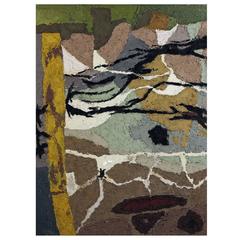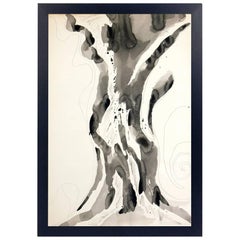Emory Ladanyi
Emory Ladanyi was born on November 8, 1902 in Kecskemet, Hungary, and was the child of Mihaly and Maria Ladanyi. Ladanyi moved with his family to Eger, a town famous for its good wine. He studied at the High School of Science and Art. At 15, he discovered anatomy in a textbook and began to consider a career in medicine and was accepted into the Medical School of The University of Budapest to become a medical student. Ladanyi received his doctoral degree in 1927 and did his residency in dermatology in the largest hospital in Berlin, then one of the most prominent dermatology centers of Europe. In Berlin, he was especially impressed by the works of Edvard Munch, forerunner of German Expressionism, who exerted a lasting influence on his work. Following medical residency in Vienna, he was also impressed by the works of Gustav Klimt, Egon Schiele and Kokoschka. In 1928, Ladanyi returned to Budapest to continue postgraduate studies, also advancing his art education. His many friends were among the avant-garde poets and writers of that time. In March 1929, he arrived in New York. June of that year, he passed the medical boards and in September received his license to practice medicine in the State of New York. Outside of the medical profession which enabled him the livelihood to continue to paint, Ladanyi moved exclusively in avant-garde circles of New York City. He was a close friend of the composer Edgar Varese. Others of his circle were poet Kenneth Patchen, writers Anais Nin and Henry Miller. After Pearl Harbor, Ladany at 40 years of age, volunteered for service in the US Army and was commissioned a captain in the Medical Corps. During the duration of the war, he gave up his medical practice and his wife, Ila/Ilona (b. Feb 18, 1901) who immigrated from Hungary in January 1930, remained in a small New York apartment. After the war in 1945, Ladanyi started to rebuild his professional life in medicine while continuing his work as an artist. In subsequent years, his continuing art was shown in multiple exhibitions and his art was purchased and displayed in many private collections and museums both nationally and international. Ladanyi passed away in October 1986 in New York City, his wife in April 1987 in New York City, they had no children.
1960s Hungarian Vintage Emory Ladanyi
1950s American Mid-Century Modern Vintage Emory Ladanyi
Glass, Wood, Paint
1960s American Mid-Century Modern Vintage Emory Ladanyi
Glass, Wood, Paper
1980s American Mid-Century Modern Vintage Emory Ladanyi
Canvas, Paint
1950s American Mid-Century Modern Vintage Emory Ladanyi
Glass, Wood, Paint, Paper
1960s American Mid-Century Modern Vintage Emory Ladanyi
Glass, Wood, Paper
1970s Mid-Century Modern Vintage Emory Ladanyi
Canvas
2010s American Modern Emory Ladanyi
Paint
1950s American Mid-Century Modern Vintage Emory Ladanyi
Glass, Wood, Paper
1950s American Mid-Century Modern Vintage Emory Ladanyi
Glass, Wood, Paper
1950s American Mid-Century Modern Vintage Emory Ladanyi
Glass, Wood, Paper
20th Century American Emory Ladanyi
Canvas, Acrylic, Wood
Mid-20th Century Swedish Mid-Century Modern Emory Ladanyi
Paint, Paper


